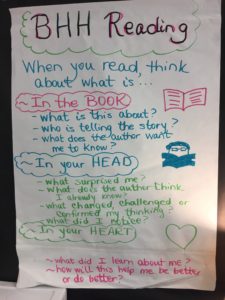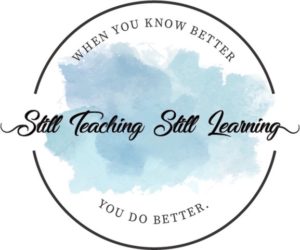If you’re like me, you are always looking for ways to use time better, be more productive, get more done. So, here’s my question — is reading a waste of time?
I am a fifth grade teacher and I am a voracious reader. You do not even want to know how much money I have spent on Amazon books alone (not counting books I buy from local independent bookstores). It’s not a bad thing to be a voracious reader, right?
I’m questioning that right now. Here’s why.
In addition to all the books and magazines I read for myself, I also read many books about education issues and how to be a better teacher of particular subjects. Since I have a master’s degree in literacy instruction, I am especially interested in any book that helps me improve my teaching of reading. Some recent favorite books of mine are by Kylene Beers and Robert Probst: Notice & Note: Strategies for Close Reading, Reading Nonfiction: Notice & Note Stances, Signposts & Strategies, and Disrupting Thinking – Why How We Read Matters.
(I am also a big fan of Kylene’s book When Kids Can’t Read: What Teachers Can Do, but that’s a subject for another post.)
In their book Disrupting Thinking – Why How We Read Matters, Kylene and Bob teach a simple framework for students to use to help them to think more deeply about texts. I have been using this framework with my students, with great success. It is not quite automatic to some of them yet, but with consistent application of this simple but powerful framework, my goal is that this way of thinking will be habitual to them by the end of the school year.
Here is the framework:

While using this framework with my students in a discussion one day, a student mentioned that this framework is helping him to slow down and really think about what he is reading, instead of just pushing on through to get “done”. Other students chimed in and said that they used to spend more of their time “just reading”, but that this framework was now helping them to actually stop and think about what the story or the information means to them. It was a powerful moment for me as a teacher. But it was even more powerful for me personally.
I had to think about what my students had just shared and I wondered: How often do I just devour a book or magazine article or devotional or inspirational book, and then just walk away? How often do I actually reflect on the questions in the HH part, especially the Heart questions? I’m great about telling you what I read, what it was about, what the author said. But how much of this do I actually take to heart and actually do something with what I read? How is all of this voracious reading actually doing me any good and changing me personally or changing my teaching practice? How much of this just gets overwhelming so that nothing changes as a result? That’s when the reading, while enjoyable, is not doing me any good and could even be considered a waste of time.



So that happened one day, and the very next day I read page 71 in a daily inspiration book called Rise & Hustle by Mike Whitfield. The title was “Why Reading Books Doesn’t Do Any Good.” (Of course, as a teacher and a reader, I immediately disagreed with the title, but I knew Mike probably had a point to make and he got my attention.) In that day’s reading, Mike talked about the very questions I had asked myself the day before. It is at moments like this that I know God is speaking to me.
Mike says:
“After all, what’s the point of reading and reading . . . and reading . . . and reading without actually applying anything you have learned because you’re just overwhelmed? You’re not giving yourself enough time to process it. This is when reading books for self-improvement doesn’t do any good.”
Well – it must be time to make a change.
Here are my plans for changing that and for becoming a more intentional reader. I want to take my reading to heart and actually apply what I am reading and learning.



*Choose just one book in whatever category I want to read. For example, read only one education-related book at a time, one self-improvement book at a time, one inspirational/faith-based book at a time.
*Depending on the size of the book, I will read one or two chapters OR just read five – ten pages. And stop for the day!
*Keep a notebook handy while I’m reading. As I read, I will jot down insights I have or questions or ponderings — whatever comes to mind that has to do with the reading. (Funny how I ask my students to do this with their reading and have not been doing this myself.)



*For the next day or two, I will review what I wrote in my notebook at random times so that I can keep the reading in my mind. As I think about just this small part that I read and what it means for me, I will probably get more insights into how to apply what I read (the HEART part of the framework).
*Before reading the next “chunk”, I will review my notes again and write down any other thoughts or insights that came to me while I was busy doing other things. (Because that is when we often get our best ideas — when we’re doing other things!)
We’ll see what happens. I have a feeling that using the BHH framework will change my reading life, as it has changed my students’ reading lives. I would love to hear from you if you try this too!
